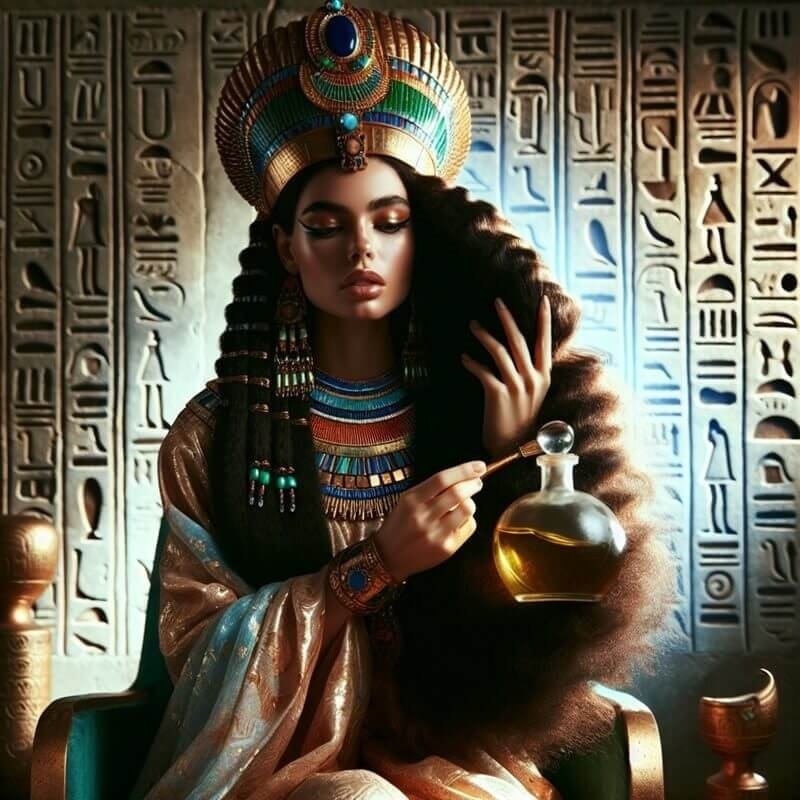
For centuries, ever since the dawn of history, the hairstyles of Egypt have inspired admiration in historians, archaeologists, and beauty seekers alike. From downright intricate ancient Egyptian hairstyles to modern interpretations of these ancient hairstyles, hairstyles are not merely an interpretation of fashion but also an extension of tradition, culture, and climate. Regardless of whether you want to learn more about these ancient hairstyles for long hair or why the hair culture is such a big part of Egyptian history, this blog is going to explore these ancient hair mysteries for you. Let's check out these ancient hairstyles, their culture, and traditions.
Egypt's arid and hot climate also greatly contributed to its hair culture. The dry weather and the hot sun affected the manner in which the ancient Egyptians groomed their hair and dressed it. This is how the climate affected these ancient hairstyles:
These practical needs led to the creation of hairstyles that we consider classic, unique, royal, special, and timeless Egyptian looks.
You may also like to read: The Role of Hair in Ancient Egyptian Religious Ceremonies

Ancient Egyptian hair wasn't merely a cosmetic appearance but necessarily had status, tradition, and cultural connotations attached to it. Let's move along through some of the more traditional styles:
Another popular ancient hairstyle was wigs, which both men and women wore. They were sported for all sorts of reasons:
One of the favorite options of these ancient hairstyles, in particular for women, was the braids. Advanced braiding methods, at times accompanied with pearl or gold thread, were ingenious and artistic. There were also curls, either created with heated tools or with pinning hair against reeds.
For hygiene, the majority of the ancient Egyptians shaved their heads or cropped their hair, even priests and children. But it was not just a hygiene tradition, for it carried a symbolic significance because it symbolized purity and spirituality.
These time-honored Egyptian styles incorporated hair accessories. Hair ties, headbands, and especially gold ornament accessories were all used to beautify the style as a declaration of social position and wealth. Even ordinary ones were equipped with accessories.
In ancient Egypt, hair was not just a style—it was also deeply connected to religion, tradition, and identity. This is how the culture of hair shaped Egyptian culture:
Hair was religiously important in ancient Egypt. For example:
Hairstyles depended on age and sex:
These ancient hairstyles were a symbol of beauty and grace. Well-groomed hair was highly valued, and women and men alike boasted about their appearance.
You can also go through this blog: Unlock the Mystique of Egyptian Hair Crowns and Divine Power
Long hair has always provided a canvas for artistic expression within Egyptian society. Long hair hairstyles in ancient Egypt included:
These vintage hairstyles are now sported for their timeless beauty and cultural importance. Contemporary hairstylists and devoted believers call these vintage hairstyle templates, inserting vintage motifs into contemporary designs. Some of the methods by which the Egyptian style is reinterpreted today are:
Inspired by the Egyptian braids of the past, braided crowns have become a top wedding day, festival, and other special occasions pick. Braided crowns are a look that perfectly blends elegance and cultural heritage.
These ancient hairstyles today have a tendency to encourage the celebration of natural texture, whether curly or straight. It gives rise to the trend that speaks of oneself and the realness it brings.
Accessories are, indeed, in today's Egypt, just as much an important feature of these ancient hairstyles. Headbands, clips, and beads are the topping to every hairstyle, allowing sophistication to shine.
Wigs and extensions are still the choice for those who want to change style but keep their own hair. The tradition, which has been here since ancient Egypt, is not lost even now, though.
These ancient hairstyles have transcended the boundaries of Egypt. On runways and in cinemas, the beauty of these hairstyles continues to mesmerize individuals around the world. Following are the reasons why the hairstyles are so iconic:
If you're inspired by the beauty of these ancient hair, here are some tips to incorporate these styles into your own look:
You can also go through this article: Sacred Hair Practices for Egyptian Children and Traditions
Egyptian hairstyles merge such practicality with artistic prowess and cultural implications. This will take us from the construction and wig braiding of ancient hairstyles to modern radical interpretations of these ancient hairstyles; this style is that of climate, culture, and tradition. It is one thing alone to say that, whether one or another of these ancient long hairdos is deemed traditionally graceful, they stood for something in relation to aspects of hair culture; yet, the whole time-tested creations remain very much alive today.
So, as you do next for your hair, allow yourself a moment to acknowledge the rich history and the sheer genius of Egyptian style. Who knows? You may glean one of your next hairstyles from some quite ancient Egyptian secrets!
This content was created by AI